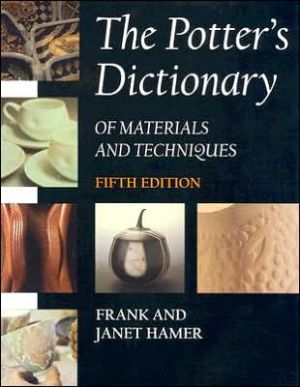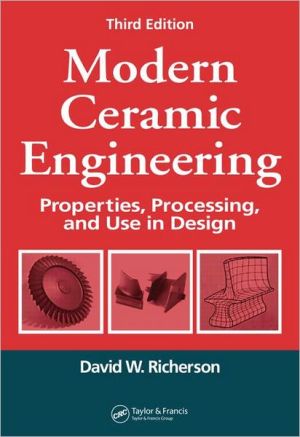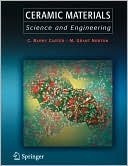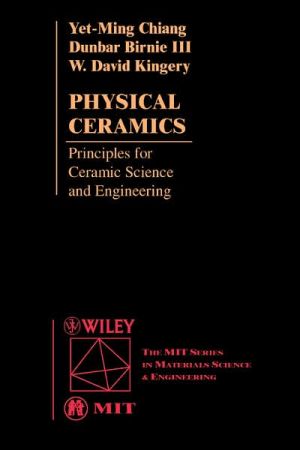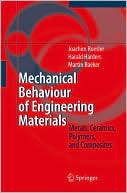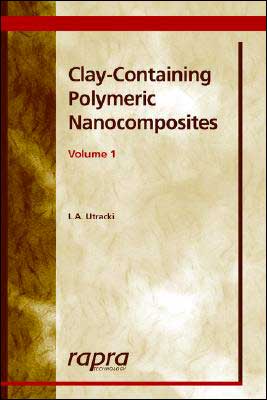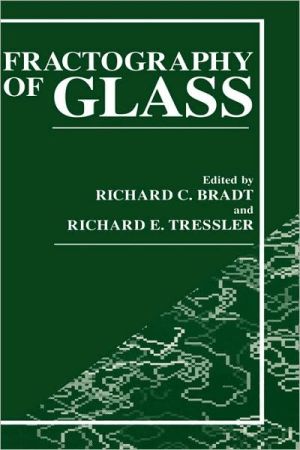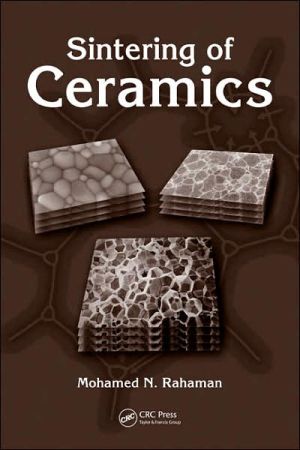Ceramic Matrix Composites: Fiber Reinforced Ceramics and their Applications
Search in google:
Ceramic matrix composites represent a new class of non-brittle refractory materials for harsh and extreme environments, characterized by high thermal stability, corrosion resistance and strength-to-weight ratio. This makes them predestined for use in aerospace, ground transportation, mechanical engineering and power generation.The editor and authors of this handbook are renowned experts from EADS, MT Aerospace, NASA, Porsche, Schunk and Snecma, as well as research institutes in Europe, the USA and Japan, who provide here a comprehensive overview of the current status of CMCs, focusing on applications.A valuable information source for scientists, engineers and technicians, as well as students, and a general reference for professionals in materials science and engineering.
Foreword VPreface XVIIList of Contributors XIXFibers for Ceramic Matrix Composites Bernd Clauss 1Introduction 1Fibers as Reinforcement in Ceramics 1Structure and Properties of Fibers 2Fiber Structure 2Structure Formation 3Structure Parameters and Fiber Properties 4Inorganic Fibers 7Production Processes 7Indirect Fiber Production 7Direct Fiber Production 7Properties of Commercial Products 9Comparison of Oxide and Non-oxide Ceramic Fibers 9Oxide Ceramic Filament Fibers 10Non-oxide Ceramic Filament Fibers 11Carbon Fibers 12Production Processes 15Carbon Fibers from PAN Precursors 15Carbon Fibers from Pitch Precursors 17Carbon Fibers from Regenerated Cellulose 17Commercial Products 18Acknowledgments 19Textile Reinforcement Structures Thomas Gries Jan Stuve Tim Grundmann 21Introduction 21Definition for the Differentiation of Two-Dimensional and Three-Dimensional Textile Structures 23Yarn Structures 23Two-Dimensional Textiles 24Nonwovens 24Woven Fabrics 25Braids 27Knitted Fabrics 28Non-crimp Fabrics 29Three-Dimensional Textiles 30Three-Dimensional Woven Structures 30Braids 32Overbraided Structures 32Three-Dimensional Braided Structures 34Three-Dimensional Knits 37Multilayer Weft-Knits 37Spacer Warp-Knits 37Preforming 38One-Step/Multi-Step Preforming 38Cutting 39Handling and Draping 39Joining Technologies 40Textile Testing 41Tensile Strength 41Bending Stiffness 41Filament Damage 42Drapability 42Quality Management 42Conclusions 43Processability of Brittle Fibers 43Infiltration of the Textile Structure 43Mechanical Properties of the Final CMC Structure 44Productivity and Production Process Complexity 44Summary and Outlook 44Acknowledgments 45Interfaces and Interphases Jacques Lamon 49Introduction 49Role of Interfacial Domain in CMCs 50Mechanism of Deviation of Transverse Cracks 52Phenomena Associated to Deviation of Matrix Cracks 53Tailoring Fiber/Matrix Interfaces. Influence on Mechanical Properties and Behavior 55Various Concepts of Weak Interfaces/Interphases 59Interfacial Properties 61Interface Control 64Conclusions 66Carbon/Carbons and Their Industrial Applications Roland Weiss 69Introduction 69Manufacturing of C/Cs 69Carbon Fiber Reinforcements 71Matrix Systems 73Thermosetting Resins as Matrix Precursors 73Thermoplastics as Matrix Precursors 74Gas Phase Derived Carbon Matrices 75Redensification/Recarbonization Cycles 79Final Heat Treatment (HTT) 80Industrial Applications of C/Cs 82Oxidation Protection of C/Cs 83Bulk Protection Systems for C/Cs 83Outer Multilayer Coatings 88Outer Glass Sealing Layers 90Industrial Applications of C/Cs 92C/Cs for High Temperature Furnaces 97Application for Thermal Treatments of Metals 102Application of C/C in the Solar Energy Market 105Melt Infiltration Process Bernhard Heidenreich 113Introduction 113Processing 114Build-up of Fiber Protection and Fiber/Matrix Interface 115Manufacture of Fiber Reinforced Green Bodies 117Build-up of a Porous, Fiber Reinforced Preform 118Si Infiltration and Build-up of SiC Matrix 119Properties 121Material Composition 127Mechanical Properties 128CTE and Thermal Conductivity 130Frictional Properties 131Applications 131Space Applications 131Short-term Aeronautics 133Long-term Aeronautics and Power Generation 133Friction Systems 134Low-Expansion Structures 135Further Applications 136Summary 137Chemical Vapor Infiltration Processes for Ceramic Matrix Composites: Manufacturing, Properties, Applications Martin Leuchs 141Introduction 141CVI Manufacturing Process for CMCs 143Isothermal-Isobaric Infiltration 144Gradient Infiltration 145Discussion of the Two CVI-processes 146Properties of CVI Derived CMCs 146General Remarks 146Mechanical Properties 148Fracture Mechanism and Toughness 148Stress-Strain Behavior 149Dynamic Loads 151High Temperature Properties and Corrosion 151Thermal and Electrical Properties 153Applications and Main Developments 153Hot Structures in Space 153Gas Turbines 155Material for Fusion Reactors 156Components for Journal Bearings 156Outlook 161The PIP-process: Precursor Properties and Applications Gunter Motz Stephan Schmidt Steffen Beyer 165Si-based Precursors 165Introduction 165Precursor Systems and Properties 166Cross-Linking Behavior of Precursors 167Pyrolysis Behavior of Precursors 169Commercial Available Non-oxide Precursors 171The Polymer Impregnation and Pyrolysis Process (PIP) 171Introduction 171Manufacturing Technology 173Preform Manufacturing 173Manufacturing of CMC 175Applications of the PIP-process 180Launcher Propulsion 180Satellite Propulsion 182Summary 184Oxide/Oxide Composites with Fiber Coatings George Jefferson Kristin A. Keller Randall S. Hay Ronald J. Kerans 187Introduction 187Applications 189CMC Fiber-Matrix Interfaces 189Interface Control 190Fiber Coating Methods 191CMC Processing 194Fiber-Matrix Interfaces 195Weak Oxides 195Porous Coatings and Fugitive Coatings 197Other Coatings 198Summary and Future Work 198All-Oxide Ceramic Matrix Composites with Porous Matrices Martin Schmucker Peter Mechnich 205Introduction 205Oxide Ceramic Fibers 206"Classical" CMC Concepts 207Porous Oxide/Oxide CMCs without Fiber/Matrix Interphase 208Materials and CMC Manufacturing 210Mechanical Properties 214Thermal Stability 218Other Properties 220Oxide/Oxide CMCs with Protective Coatings 223Applications of Porous Oxide/Oxide CMCs 226Microstructural Modeling and Thermomechanical Properties Dietmar Koch 231Introduction 231General Concepts of CMC Design, Resulting Properties, and Modeling 232Weak Interface Composites WIC 232Weak Matrix Composites WMC 237Assessment of Properties of WIC and WMC 238Modeling of the Mechanical Behavior of WMC 238Concluding Remarks 243Mechanical Properties of CMC 244General Mechanical Behavior 244High Temperature Properties 246Fatigue 251Concluding Remarks 255Acknowledgment 256Non-destructive Testing Techniques for CMC Materials Jan Marcel Hausherr Walter Krenkel 261Introduction 261Optical and Haptic Inspection Analysis 263Ultrasonic Analysis 262Physical Principle and Technical Implementation 263Transmission Analysis 264Echo-Pulse Analysis 265Methods and Technical Implementation 266Ultrasonic Analysis of CMC 267Thermography 268Thermal Imaging (Infrared Photography) 269Lockin Thermography 271Ultrasonic Induced Thermography 272Damage Detection Using Thermography 272Radiography (X-Ray Analysis) 273Detection of X-Rays 273X-Ray Film (Photographic Plates) 274X-Ray Image Intensifier 274Solid State Arrays 275Gas Ionization Detectors (Geiger Counter) 275Application of Radiography for C/SiC Composites 275Limitations and Disadvantages of Radiography 277X-Ray Computed Tomography 277Functional Principle of CT 277Computed Tomography for Defect Detection 279Micro-structural CT-Analysis 280Process Accompanying CT-Analysis 282Conclusions 283Machining Aspects for the Drilling of C/C-SiC Materials Klaus Weinert Tim Jansen 287Introduction 287Analysis of Machining Task 288Determination of Optimization Potentials 290Tool 290Parameters 294Basic Conditions 294Process Strategies 295Conclusions 300Advanced Joining and Integration Technologies for Ceramic Matrix Composite Systems Mrityunjay Singh Rajiv Asthana 303Introduction 303Need for Joining and Integration Technologies 304Joint Design, Analysis, and Testing Issue 304Wettability 305Surface Roughness 306Joint Design and Stress State 306Residual Stress, Joint Strength, and Joint Stability 307Joining and Integration of CMC-Metal Systems 309Joining and Integration of CMC-CMC Systems 314Application in Subcomponents 318Repair of Composite Systems 321Concluding Remarks and Future Directions 322Acknowledgments 323CMC Materials for Space and Aeronautical Applications Francois Christin 327Introduction 327Carbon/Carbon Composites 328Manufacturing of Carbon/Carbon Composites 328n-Dimensional Reinforcement 328Three-Dimensional Reinforcement Preforms 329Densification 333Carbon/Carbon Composites Applications 335Solid Rocket Motors (SRM) Nozzles 335Liquid Rocket Engines (LRE) 337Friction Applications 338Ceramic Composites 338SiC-SiC and Carbon-SiC Composites Manufacture 339Elaboration 340SiC-SiC and Carbon-SiC Composites Applications 340Aeronautical and Space Applications 340Liquid Rocket Engines Applications 341A Breakthrough with a New Concept: The Self-Healing Matrix 343Manufacturing of Ceramic Composites 343The Self-Healing Matrix 344Characterization 344Representative Applications of These New Materials 347Military Aeronautical Applications 347Commercial Aeronautical Applications 349CMC for Nuclear Applications Akira Kohyama 353Introduction 353Gas Reactor Technology and Ceramic Materials 354Ceramic Fiber Reinforced Ceramic Matrix Composites (CFRC, CMC) 356Innovative SiC/SiC by NITE Process 358Characteristic Features of SiC/SiC Composites by NITE Process 359Effects of Radiation Damage 362Ion-Irradiation Technology for SiC Materials 363Micro-Structural Evolution and Swelling 364Thermal Conductivity 366Mechanical Property Changes 369Mechanical Property Evaluation Methods 371Impulse Excitation Method for Young's Modulus Determination 372Bulk Strength Testing Methods for Ceramics 373Test Methods for Composites 374Development of Materials Database 378New GFR Concepts Utilizing SiC/SiC Composite Materials 379Concluding Remarks 381CMCs for Friction Applications Walter Krenkel Ralph Renz 385Introduction 385C/SiC Pads for Advanced Friction Systems 385Brake Pads for Emergency Brake Systems 388C/SiC Brake Pads for High-Performance Elevators 388Ceramic Brake Disks 391Material Properties 392Manufacturing 394Braking Mechanism 396Design Aspects 398Testing 401Ceramic Clutches 403Index 409

